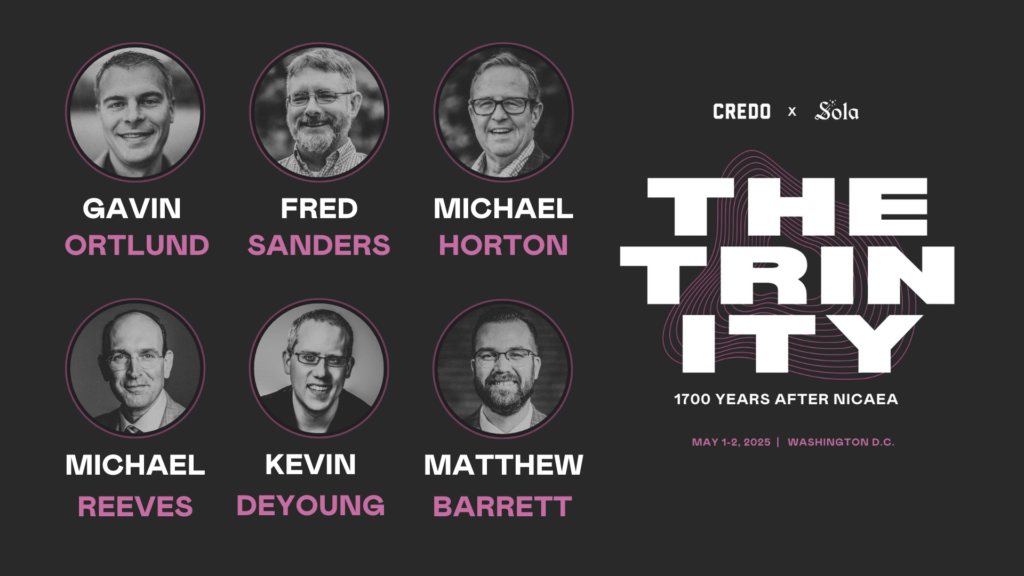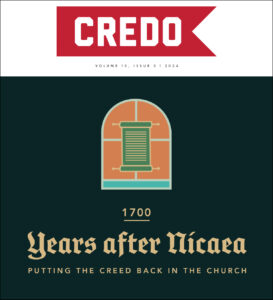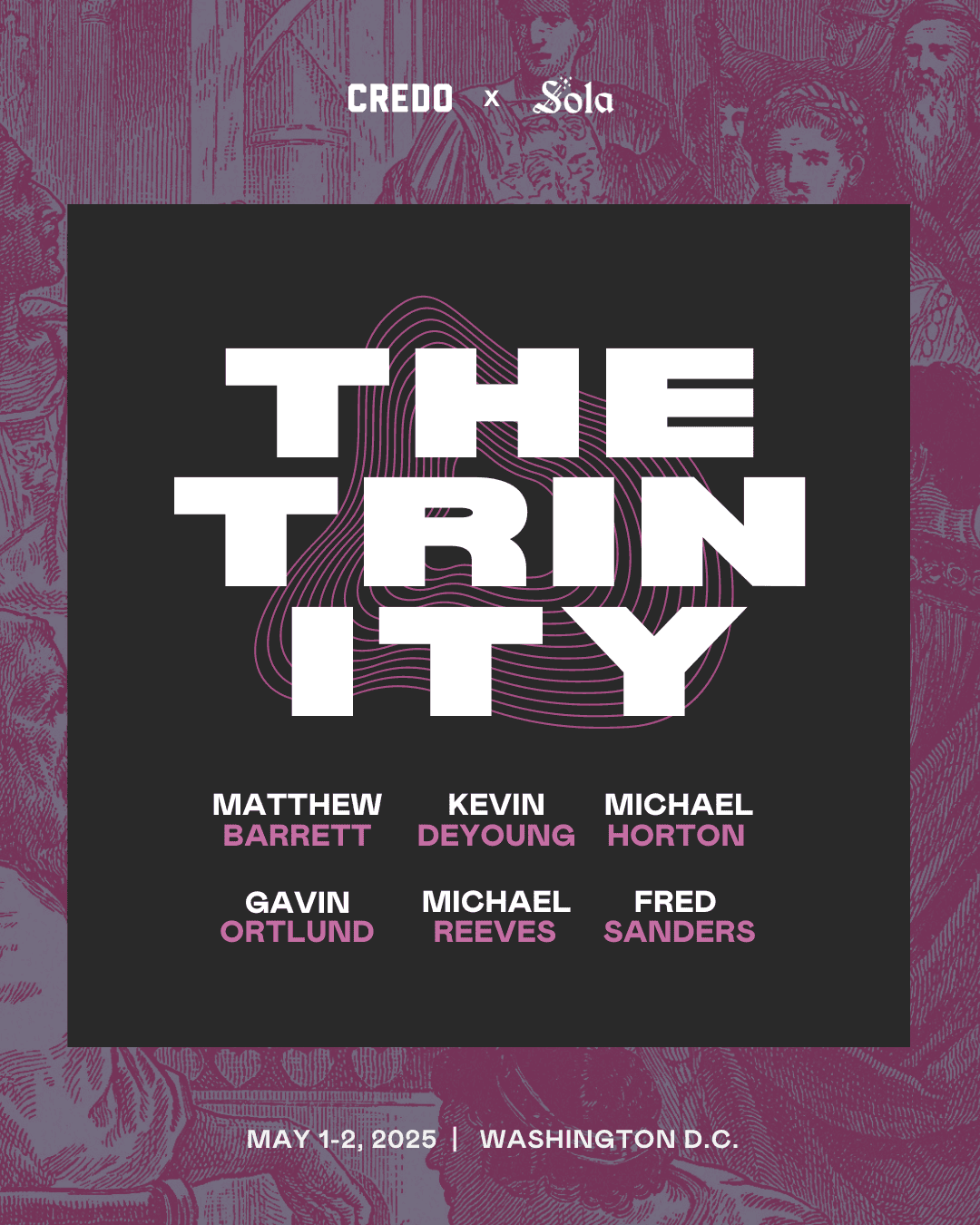Author and naturalist Peter Steinhart says, “Maps are a way of organizing wonder.” The Nicene Creed, written in 325 years then ratified and expanded in 381 at the Council of Constantinople, represents a doctrinal map seeking to organize the greatest Wonder within all the cosmos: the Triune God. It is not a replacement for the Wonder itself but helps pilgrims on the journey towards the Celestial City. The Creed prompts us to marvel at True Wonder as we progressively encounter his beauty before reaching him in glory. Thus, without the Nicene Creed, Christians are in danger of being lost in a sea of doctrinal and moral confusion. Whether evangelical Christians recite the Creed in gathered worship or not, we are indebted to the theological luminaries of the fourth century. To jettison the Creed is like disabling a GPS in an unknown territory. You are in real danger of missing your target, and if you do happen to arrive at the destination, it comes at the expense of much frustration and turmoil. We must maintain the Nicene Creed as the vital spiritual compass to organize the mystery and wonder of God, who is Father, Son, and Spirit.
 When the Creed begins with a confession of belief in “one God, the Father Almighty, Maker of heaven and earth, and all things visible and invisible,” a host of beliefs are automatically excluded. Off the table is the prevailing modern secularism, atheism, and New Age spirituality. There is one God, and we are not him. You and I had nothing to do with making heaven and earth. We had no say in orchestrating the visible and invisible realms. Nothing about us is almighty. So, belief in this God must reconcile the fact that he is the Creator, and we are the creatures. The one who made all matter matters most. This is the first point of orientation on our map. There is a God who created all things seen and unseen, and the essence of our life and faith depends upon him. But Christian confession goes further. The Creed prompts us to marvel at True Wonder as we progressively encounter his beauty before reaching him in glory. Share on X
When the Creed begins with a confession of belief in “one God, the Father Almighty, Maker of heaven and earth, and all things visible and invisible,” a host of beliefs are automatically excluded. Off the table is the prevailing modern secularism, atheism, and New Age spirituality. There is one God, and we are not him. You and I had nothing to do with making heaven and earth. We had no say in orchestrating the visible and invisible realms. Nothing about us is almighty. So, belief in this God must reconcile the fact that he is the Creator, and we are the creatures. The one who made all matter matters most. This is the first point of orientation on our map. There is a God who created all things seen and unseen, and the essence of our life and faith depends upon him. But Christian confession goes further. The Creed prompts us to marvel at True Wonder as we progressively encounter his beauty before reaching him in glory. Share on X
Declaring faith in God as creator situates us within a theistic tradition, but we are not general theists; we are specific theists. Namely, we are theists who affirm that there is a Father and a Son. Yet we are not bi-theists. By declaring faith in the “Only-begotten” we affirm that God is more than a unitary person. God is Father and Son. This Son is unique. He is not the Father, yet he is still “Light of Light, Very God of Very God.” As the theologians of the fourth century wrestled with this truth, the notion of eternal generation received significant attention. This is no mere wordplay or philosophical fancy. Eternal generation is relational language. It is a cue to Christians to aid our biblical comprehension. It affirms what we believe about the eternal Son and offers theological support to buttress our confession. Either Jesus is who he says he is and did what he says he did or not. There is no room for a middling Jesus who conforms to our limited view of the world. The language retains divine mystery for “[w]ho has measured the Spirit of the LORD, or what man shows him his counsel?” (Isa 40:13). Yet aspects of God’s mystery are still knowable, for “God chose to make known how great among the Gentiles are the riches of the glory of this mystery, which is Christ in you, the hope of glory” (Col 1:27). Thus, we can confidently confess our belief that Jesus is “Very God of Very God, begotten, not made” and still find ourselves enraptured in awe of God’s being. The language of the Creed woos us into worship rather than repelling us from reverence.We can confidently confess our belief that Jesus is “Very God of Very God, begotten, not made” and still find ourselves enraptured in awe of God’s being. The language of the Creed woos us into worship. Share on X
Thus, the Creed coordinates belief in the historical person of Christ who was “crucified…suffered…buried…rose again” with the ontological assertions that he is “the Son of God, the Only-begotten.” He is “of one essence with the Father” yet “sits at the right hand of the Father” until the culmination of all things when he “shall come again with glory to judge the living and the dead.” Christians affirm the person and work of Christ not in the abstract but in a concrete and highly relational manner. The object of salvation is humanity. The Creed asserts that you and I are the reason for the incarnation of the Son. The fourth-century church father Athanasius stated, “For we were the purpose of his embodiment, and for our salvation he so loved human beings as to come to be and appear in a human body.” (On the Incarnation, 4). His incarnation ultimately led him to his crucifixion. Yet he conquered death in his own death and resurrection. The ignominy of the crucifixion, truly the worst form of death conjured by man, was completely overturned and reconstituted. Once a seat of shame, the cross is now the throne of a King. Once seen as torture for the subjugated, it is now the token of the liberated. It defines salvation and fuels discipleship. This Son became incarnate for us and our salvation. Let that sit for a moment. God was not bored. God is not flighty. God’s plan of his salvation necessitated the incarnation of the Son. Additionally, the incarnational mystery involving the virgin Mary reminds us that God delights to use the ordinary faithfulness of his people to inaugurate and perpetuate his cosmic master plan.
The Creed ought to engender love, humility, and perseverance amongst its confessors. As the writer of Hebrews declares, “Let us run with endurance the race that lies before us, keeping our eyes on Jesus, the pioneer and perfecter of our faith. For the joy that lay before him, he endured the cross, despising the shame, and sat down at the right hand of the throne of God” (Heb 12:1b–2). To recite the Creed is to reaffirm God’s love for humanity and proclaim salvation’s beauty. And we do this by faith through the ongoing work of the Holy Spirit, who is, as the Creed affirms, the “Lord and giver of life.” The Spirit rejuvenates hearts and stirs in us the desire for the things of God. The Nicene fathers were united in their belief of salvation’s transforming effects by the Spirit. Those who have pledged allegiance to Christ have his life dwelling in them by the power of the Spirit. They see their once former life of sin and idolatry for what it is: madness and folly. Godlessness has been replaced with true godliness. Salvation in Christ has brought about a transformation, a new way of seeing, and a new way of living. Transformation by the Spirit is always the fruit of salvation in Christ.
Lest Christians become myopic in their vision, the Creed prompts the believer to ponder the coming resurrection and divine judgment. Our hope is in a kingdom without end when “the earth will be filled with the knowledge of the glory of the LORD as the waters cover the sea” (Hab 2:14) in a “new heavens and a new earth, [where] the former things shall not be remembered or come into mind” (Isa 65:17). We affirm this blessed hope together within a local communion of saints, which is an expression of the “one, holy, catholic, and apostolic Church” stated in the Creed. This “one, holy, catholic, and apostolic” language is less about an outward structure (as Roman Catholics and Eastern Orthodoxy assert) and more about a spiritual reality orchestrated by God and empowered by his Word and Spirit. There is only one true church: the church founded on the cornerstone, Jesus Christ, declared by the Apostles, built upon the enscripturated Word, and comprised of Spirit-indwelt disciples gifted for ministry to one another. In this Church, the one baptism is practiced, an ordinance that connects to the primal gospel proclamation. This one baptism, marked by the tri-fold name of God and affirmed by the church and its leaders, is the marker of one’s forgiveness of sins and regeneration. It brings us into the arms of the church and the company of the saints and marks our allegiance to Christ as Lord.
We must remember that anything the Creed has to say finds its main coordinates in Scripture. Our map of wonder has Scripture as its key. The value of the Creed is that it serves as a summary and short explanation of Christian belief. The Creed exists not as an object of power to the repressed but as a token of devotion to the liberated. May it again serve as the map of organizing Wonder that it was always intended to be.


